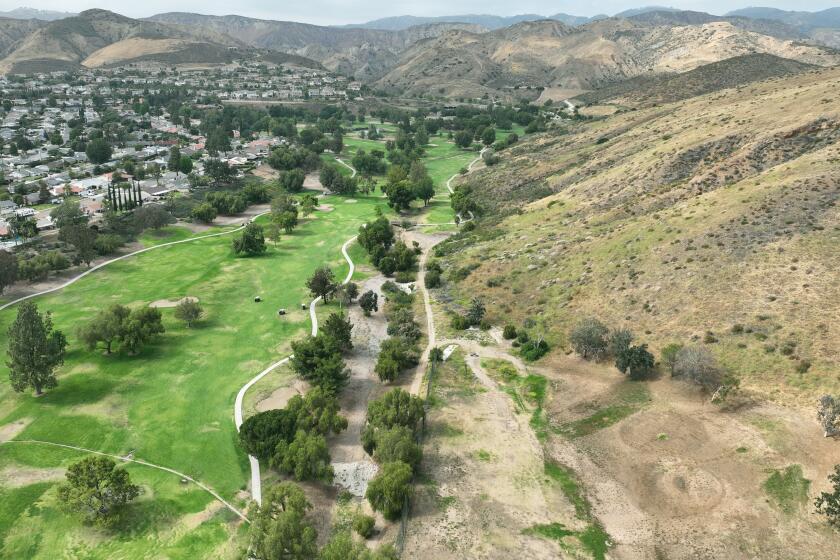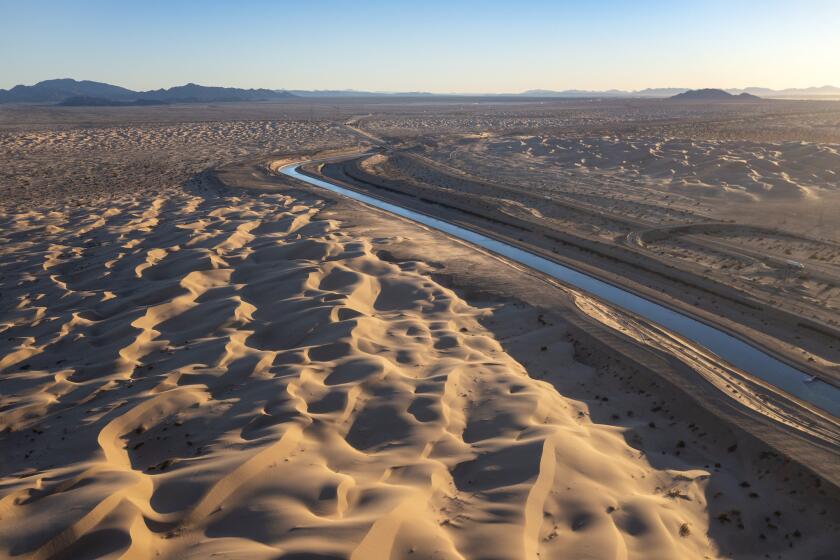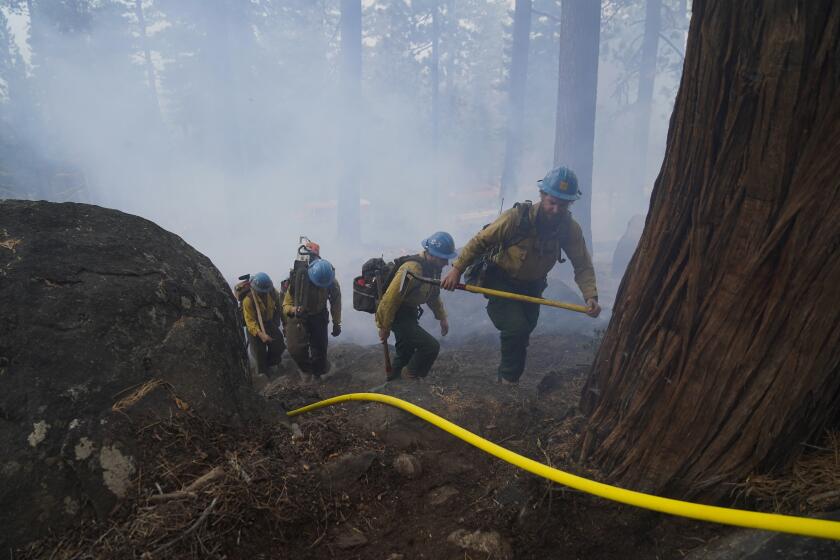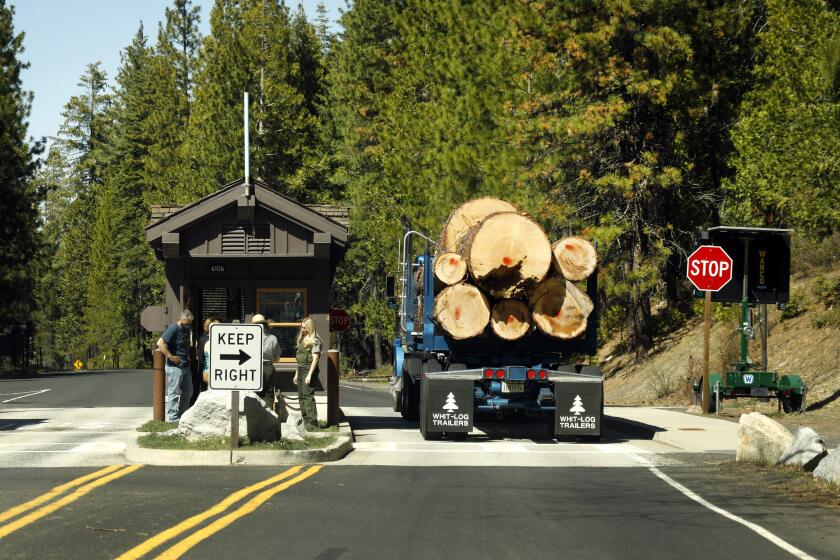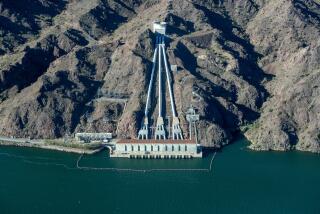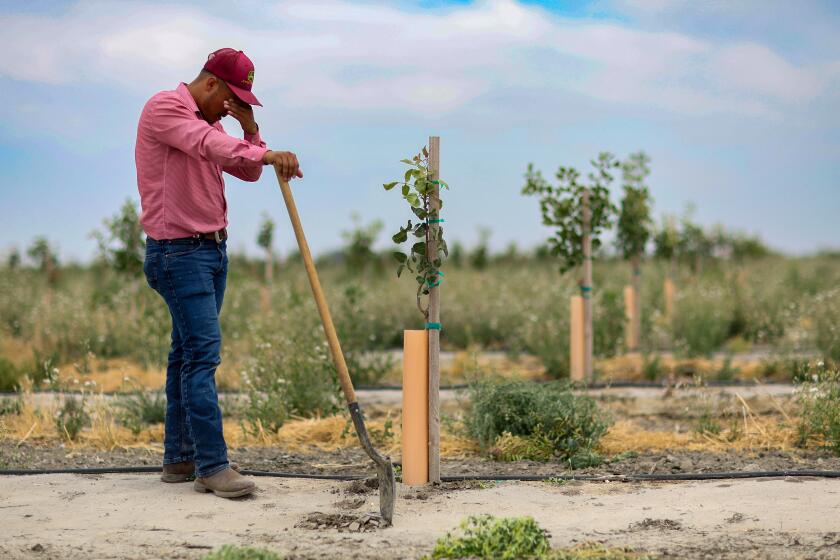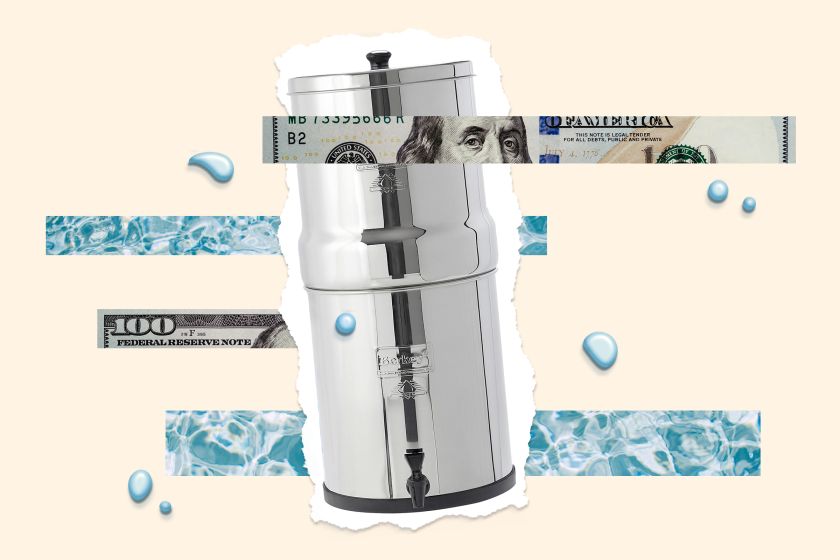Major water cutbacks loom as shrinking Colorado River nears ‘moment of reckoning’
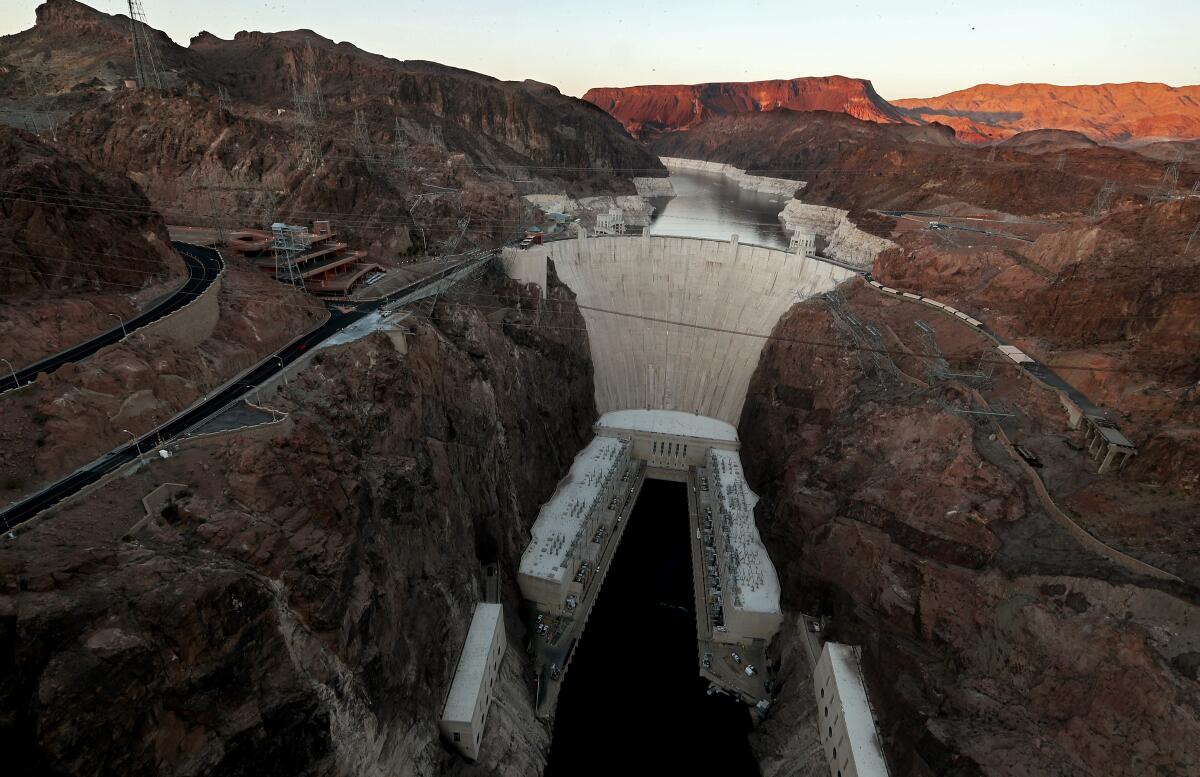
As the West endures another year of unrelenting drought worsened by climate change, the Colorado River’s reservoirs have declined so low that major water cuts will be necessary next year to reduce risks of supplies reaching perilously low levels, a top federal water official said Tuesday.
Bureau of Reclamation Commissioner Camille Calimlim Touton said during a Senate hearing in Washington that federal officials now believe protecting “critical levels” at the country’s largest reservoirs — Lake Mead and Lake Powell — will require much larger reductions in water deliveries.
“A warmer, drier West is what we are seeing today,” Touton told the Senate Energy and Natural Resources Committee. “And the challenges we are seeing today are unlike anything we have seen in our history.”
Southern California golf courses are being told to cut water use under new drought rules. Managers say they plan to let some grass turn brown.
The needed cuts, she said, amount to between 2 million and 4 million acre-feet next year.
For comparison, California is entitled to 4.4 million acre-feet of Colorado River water per year, while Arizona’s allotment is 2.8 million.
The push for a new emergency deal to cope with the Colorado River’s shrinking flow comes just seven months after officials from California, Arizona and Nevada signed an agreement to take significantly less water out of Lake Mead, and six weeks after the federal government announced it is holding back a large quantity of water in Lake Powell to reduce risks of the reservoir dropping to a point where Glen Canyon Dam would no longer generate electricity.
Despite those efforts and a previous deal among the states to share in the shortages, the two reservoirs stand at or near record-low levels. Lake Mead near Las Vegas has dropped to 28% of its full capacity, while Lake Powell on the Utah-Arizona border is now just 27% full.
Touton said it’s critical to achieve the additional cutbacks and her agency is in talks with the seven states that depend on the river to develop a plan for the reductions in the next 60 days. She warned that the Bureau of Reclamation has the authority to “act unilaterally to protect the system, and we will protect the system.”
Though Touton didn’t spell out what that could entail, the Interior Department could impose cuts if the states fail to reach an agreement on their own. Touton said her agency is “working with the states and tribes in having this discussion.”
“We need to see the work. We need to see the action,” Touton said, calling for representatives of the states “to stay at the table until the job is done.”
The Colorado River supplies water to nearly 40 million people in cities from Denver to Los Angeles and farmlands from the Rocky Mountains to the U.S.-Mexico border. The river has long been over-allocated, and its reservoirs have declined dramatically since 2000 during a severe drought that research shows is being intensified by global warming and that some scientists describe as the long-term “aridification” of the Southwest.
The Imperial Irrigation District wields enormous power in the American West.
“What has been a slow-motion train wreck for 20 years is accelerating, and the moment of reckoning is near,” said John Entsminger, general manager of the Southern Nevada Water Authority, which supplies the Las Vegas area.
He pointed out that Lake Mead’s water level, now at 1,045 feet above sea level, has continued to decline toward critically low levels. Hoover Dam could still release water down to a level of 895 feet, but below that, water would no longer pass through the dam to supply California, Arizona and Mexico — a level known as “dead pool.”
“We are 150 feet from 25 million Americans losing access to the Colorado River, and the rate of decline is accelerating,” Entsminger told the senators.
Avoiding “potentially catastrophic conditions,” Entsminger said, will require reductions that many water managers previously considered unattainable.
In talking with representatives of other states, Entsminger said, they all recognize the urgency of the situation and are working to increase conservation efforts.
“However, and there’s no way around this, cities alone cannot address this crisis,” Entsminger said.
Entsminger pointed out that roughly 80% of the river’s flow is used for agriculture, and most of that for thirsty crops like alfalfa, which is mainly grown for cattle, both in the U.S. and overseas.
“I’m not suggesting that farmers stop farming, but rather that they carefully consider crop selection and make the investments needed to optimize irrigation efficiency,” Entsminger said. “By reducing their use of Colorado River water, agricultural entities are protecting their own interests.”
A federal firefighter’s viral resignation letter is highlighting the job’s low pay and harsh working conditions in the age of climate change.
Last year, the federal government declared a shortage on the Colorado River for the first time, triggering substantial cutbacks in water deliveries to Arizona, Nevada and Mexico. Farmers in parts of Arizona have left some fields dry and unplanted, and have turned to more groundwater pumping.
The cuts have yet to limit supplies for Southern California, but that could change as the reservoirs continue to drop.
The timeline that Touton laid out, to come up with an agreement for water reductions within 60 days, puts the deadline just before the Bureau of Reclamation is scheduled to release its mid-August projections for reservoir levels on the river. Those projections determine the level of the shortage in 2023 and the severity of the required cuts in deliveries.
“Let’s get to the table, and let’s figure this out by August,” Touton said. “That’s what we’re working towards.”
Exactly how reductions will be achieved has yet to be negotiated. Some previous water-saving arrangements have involved paying growers to temporarily fallow land. Some tribes have also agreed to leave a portion of their water supplies in Lake Mead in exchange for compensation.
Most of the river’s flow begins as snow and rainfall in the Rocky Mountains. But during the severe dry spell over the past 22 years in the Colorado River Basin, hotter temperatures triggered by accumulating greenhouse gases have intensified the dryness across the watershed.
With warmer temperatures, vegetation has taken up more water, more moisture has evaporated off the landscape, and soils have been baked dry, leaving less runoff flowing in streams and into the river.
The amount of runoff flowing into Lake Powell this spring and summer is estimated to be just 59% of average.
The hearing focused on solutions to extreme drought in the West, but Democratic Senator Martin Heinrich of New Mexico stressed that the dryness is unprecedented and that the word drought doesn’t fully describe the crisis.
Forest thinning is now being conducted at Yosemite National Park. Environmentalists want it to stop, saying the work was never fully vetted.
“It’s frankly a direct result of the lack of action on climate that we have seen for more than 20 years,” Heinrich said.
Maurice Hall, who leads the Environmental Defense Fund’s water program, said adaptation is critical.
“We have in the past tended to view our water management through a lens of stability,” Hall said. “We have to throw all that out and increase our real-time and near real-time monitoring and information processing, and be prepared to make adjustments as we discover how the new climate processes are affecting our water resources.”
Patrick O’Toole, president of the Family Farm Alliance, expressed concerns about what could happen if water is taken away from agriculture, including the potential for harming rural communities and food production.
Entsminger said he agrees that the country needs to prioritize food security, but the fact remains that the water supply and demand are out of balance.
“We can’t balance the structural deficit by evacuating cities. So we’re going to need to make our ability to grow the same amount of food with less water a priority,” Entsminger said. “Every user in every sector needs to be planning for how they’re going to take care of their share of the pain.”
Some of the senators and water officials also discussed how the federal government could help accelerate infrastructure projects such as building new wastewater recycling plants.
While developing regionwide plans to immediately cut water use next year, the seven states in the Colorado River Basin are also preparing to negotiate new rules for dealing with shortages after 2026, when the current rules are set to expire.
Alongside those negotiations, former Interior Secretary Bruce Babbitt has called for revamping the 1922 Colorado River Compact, the foundational agreement that divided the river among the states, to adapt to the reduced amount of water that is available in the watershed.
Touton said in her written testimony that the Bureau of Reclamation will issue a notice this month to ask for input on development of new post-2026 rules.
For now, Touton said, she is focusing on securing the additional conservation that’s needed next year in talks with the states. She wrote that these reductions are needed “to protect the Colorado River system infrastructure and the long-term stability of the system.”
